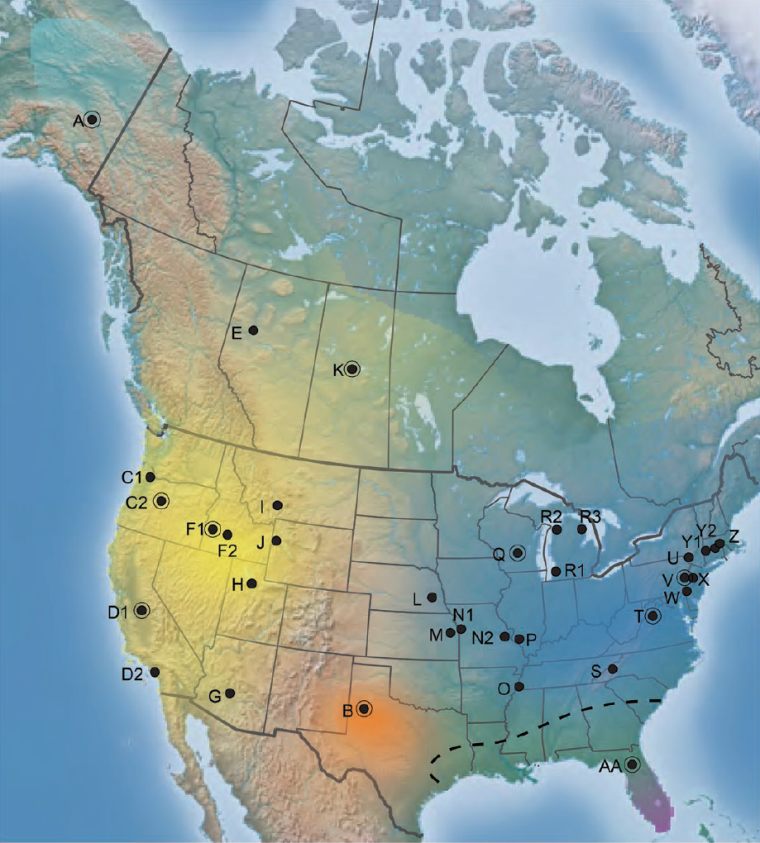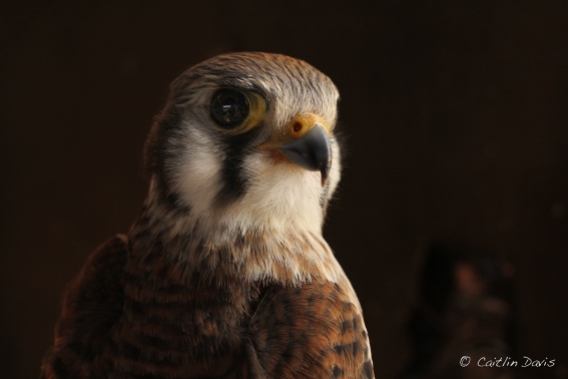THE ISSUE
- American Kestrels (Falco sparverius) are declining and effective management requires identifying which populations are most vulnerable, where they are most limited, and how climate change will impact patterns of decline
- Kestrels, and many other species, are shifting the timing and patterns of their migratory movements, which could make inferring population trends from migration-counts difficult
THE AMERICAN KESTREL GENOSCAPE PROJECT
The American Kestrel Genoscape Project is a large-scale collaborative effort to develop high-resolution molecular markers for creating a spatially explicit map of American Kestrel breeding populations. This information will allow us to identify genetically distinct groups, population-specific trends, and migratory connectivity maps. Learn more about genoscapes here. *Please note that the data collection portion of the project is complete, and we are no longer accepting feather samples. Thank you!*
RESULTS
Our team has analyzed feather samples from American Kestrels across their breeding range in the U.S. and Canada, and detected five genetically distinct groups: Alaska, Western, Eastern, Texas, and Florida. Our results suggest that these differences are likely due to different migratory strategies and geographic distance between groups, limiting gene flow between them. We detected differences between two year-round resident populations (Texas and Florida), between resident and migratory populations, and between Eastern and Western populations. Resident kestrels stay in place throughout the year, so they have less opportunity to breed with kestrels from other populations, limiting gene flow between them. Although migratory kestrels may come in contact with resident kestrels during migration and winter, they are generally not breeding in the same locations. Lastly, eastern and western kestrels have different migratory routes and wintering grounds, causing them to be geographically isolated from each other. Although these five groups are genetically distinguishable, the levels of genetic differentiation were low, suggesting that kestrels do sometimes disperse between groups. These results will be important to understand population-specific trends, and responses to climate change and other stressors.

Figure from Ruegg and Brinkmeyer et al. 2021; showing five genetically distinct groups of American Kestrels: Alaska (Light blue), Western (Yellow), Eastern (Dark blue), Texas (Orange), and Florida (Purple). Graphic used under permission. Do not reproduce without express permission from authors.
Our full scientific publication “The American Kestrel (Falco sparverius) genoscape: implications for monitoring, management, and subspecies boundaries” can be accessed here
COLLABORATORS
The American Kestrel Genoscape project is a collaboration between Boise State University, HawkWatch International, The Peregrine Fund, St. Mary’s University, University of California Los Angeles, and Colorado State University, with partners from Hawk Mountain, USFWS, Florida Fish and Wildlife Conservation Commission, Texas Tech University, University of Northern British Columbia, Pacific University, and the Shenandoah Valley Raptor Study Area. Find more information about collaborators on our About Us page.



